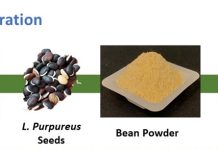
What Are PFAS?
PFAS stands for “per- and polyfluoroalkyl substances”. It’s a mouthful, isn’t it? These are man-made chemicals that are used in a lot of things we use every day.
You can find them in clothes, make-up, paint, and even in kitchen items that don’t stick, like non-stick frying pans.
Why Should We Care About PFAS?
These chemicals are very tough. They don’t break down easily, which means they can build up over time in our environment and in us humans.
Most of the time, people come into contact with PFAS through food and drinking water that’s been contaminated.
There are a few health problems that scientists think might be linked to PFAS. These include lower birth weights in babies, certain types of cancers, and a weaker response to vaccines in kids.
That last one is a big reason why the European Food and Safety Authority (or EFSA for short) decided in 2020 to set a safety limit for PFAS.
Many countries in Europe are now trying to limit how much PFAS are used and made. But even with these efforts, there are still concerns about how much of these chemicals are getting into our bodies.
What Did the Researchers Find?
Scientists at the University of Bergen in Norway were curious about this too.
They did a study called “the Bergen Growth Study 2” in 2016, where they took blood samples from kids between 6 and 16 years old. They tested the blood to see if there were any PFAS in it.
Guess what they found? Every single one of the kids had four types of PFAS in their blood. What’s more, nearly a quarter of the children had PFAS levels higher than the safety limits set by the EFSA.
That means those kids could be at risk of health problems linked to these chemicals. This is similar to what other studies in Europe and Norway have found.
The researchers shared their findings in a scientific journal called the International Journal of Hygiene and Environmental Health.
What Does This Mean for Us?
It’s a bit worrying, isn’t it? These chemicals are in everyday items, and they can get into our bodies and possibly cause health problems.
And despite efforts to limit how much PFAS are used, they’re still finding their way into our bodies.
This research shows us that it’s important to be aware of what’s in the things we use every day.
It also tells us that we need to keep trying to find ways to reduce the amount of these chemicals that are used and produced.
The scientists who did the study want to do more research to understand better how PFAS affect our health and how to protect ourselves from them.
They’re doing their best to keep us safe and healthy, but we can do our part too. We can try to use fewer things that have these chemicals in them and protect our environment from contamination.
The study was published in the Journal of Hygiene and Environmental Health.
Copyright © 2023 Scientific Diet. All rights reserved.








